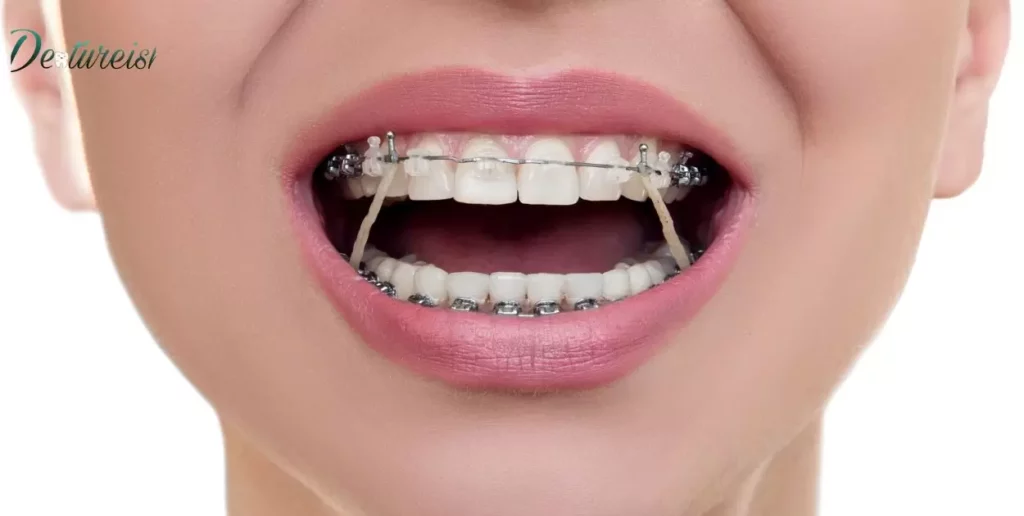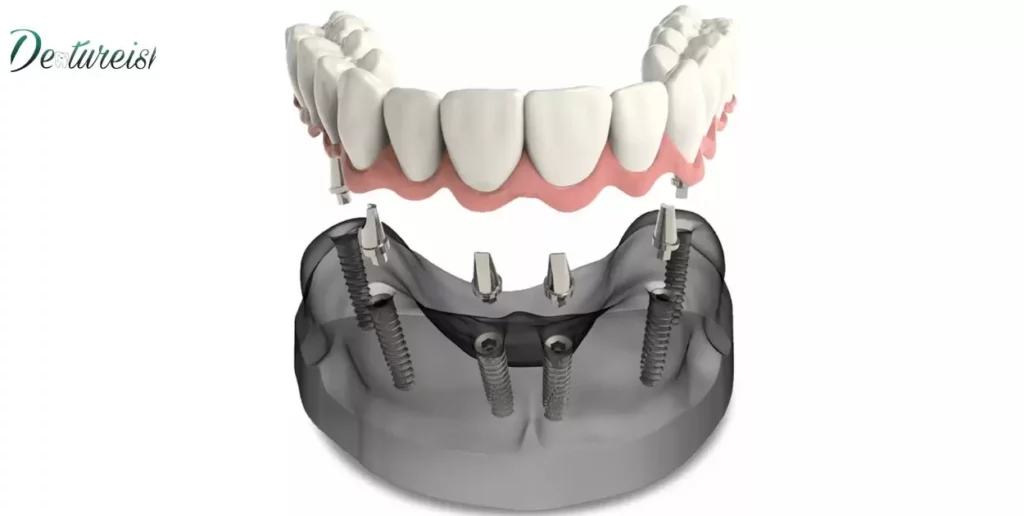In dentistry, the term “Arch” refers to the curved structure formed by the arrangement of teeth in the upper (maxillary) or lower (mandibular) jaw. The dental arch plays a crucial role in determining the alignment and occlusion of teeth, influencing overall oral health and the effectiveness of orthodontic treatments.
Unlock the secrets of a confident smile by delving into the fascinating world of dentistry. Ever wondered, ‘What is an arch in dentistry?’ Discover the architectural marvels behind a perfect dental arch and embark on a journey to a brighter, healthier grin. Take the first step towards understanding your smile – explore the significance of dental arches today!
In dentistry, an arch refers to the curved structure formed by the alignment of teeth in the upper or lower jaw. This dental arch plays a crucial role in the overall function and aesthetics of your smile, influencing factors like bite alignment and facial appearance.
What Is The Opposing Arch In Dentistry
The opposing arch in dentistry refers to the set of teeth that come into contact with those being treated. Dentists analyze the opposing arch to ensure a balanced bite and proper alignment. This evaluation helps in creating effective treatment plans and ensuring overall oral health.
In practical terms, dentists examine how the upper and lower teeth fit together when assessing the opposing arch. This evaluation guides them in addressing issues like misalignment, malocclusion, and bite problems. By considering the opposing arch, dentists can offer targeted interventions, such as orthodontic treatments or dental restorations, to enhance the patient’s oral function and appearance.
Understanding Dental Anatomy
Dental anatomy is the study of the structure of teeth. Dentists use this knowledge to diagnose and treat oral health issues. Learning dental anatomy helps professionals identify problems and provide effective dental care, ensuring patients maintain healthy smiles.
In essence, dental anatomy explores the composition of teeth, including their different parts and functions. This understanding is crucial for dental practitioners to offer precise and targeted treatments, promoting overall oral well-being.
The structure of the dental arches
The dental arches form the framework for our teeth. These arches consist of the upper and lower jaws. The upper jaw, or maxilla, holds the upper teeth, while the lower jaw, or mandible, houses the lower teeth.
Teeth are firmly anchored in the dental arches by the gums and jawbone. The arrangement of Snap In Dentures With Bone Loss teeth in the arches follows a specific pattern, with different types of teeth serving different functions. Incisors are at the front for biting, canines are pointed for tearing, and molars at the back grind food.
The dental arches play a crucial role in maintaining proper oral function. They support the facial structure and contribute to effective chewing and speech. Understanding the structure of dental arches is essential for dental professionals in providing optimal oral care and addressing dental issues.
Components of Dental Arch
The dental arch has two main components: the maxillary arch in the upper jaw and the mandibular arch in the lower jaw. These arches house the teeth, supporting functions like biting and chewing.
Each arch comprises two types of teeth: the anterior incisors and canines for cutting and tearing, and the posterior molars and premolars for grinding food. The alignment and spacing of these components are crucial for a healthy bite and overall oral function.
The Role of Dental Arches in Bite
Dental arches play a crucial role in determining how our teeth come together when we bite. These arches, which are formed by the arrangement of teeth in the upper and lower jaws, directly influence our bite’s stability and functionality. The alignment of dental arches is vital for proper chewing, speaking, and overall oral health.
The coordination between upper and lower dental arches ensures a balanced bite, preventing issues such as misalignment and discomfort. Dentists closely examine the relationship between dental arches to diagnose and address bite problems, promoting optimal dental function and a healthy, well-aligned smile.
How Many Dental Arches Do We Have

We have two dental arches in our mouth, the upper and the lower arch. The upper arch is located on the top, while the lower arch is on the bottom. These arches contain our teeth and play a crucial role in functions like biting, chewing, and speaking.
Each dental arch typically holds 16 teeth on the upper jaw and 16 on the lower jaw, making a total of 32 teeth in a healthy adult mouth. Maintaining good oral hygiene is essential for the health of these dental arches, preventing issues like cavities and gum disease.
Upper Dental Arch: Structure and Function
The upper dental arch is the curved structure in the mouth that holds the upper teeth. It plays a crucial role in the overall function of the oral cavity. The primary function of the upper dental arch is to support and hold the upper teeth securely in place, allowing for effective biting and chewing of food.
This arch is composed of the maxilla bone, which forms the upper jaw. The maxilla bone contains sockets, known as alveoli, where the roots of the teeth are anchored. The upper dental arch also contributes to the formation of the palate, which is the roof of the mouth.
upper and lower dental arches
The upper dental arch holds your top teeth, while the lower dental arch supports your bottom teeth. These arches play a crucial role in your bite and overall oral health. They determine how your teeth come together when you close your mouth, affecting functions like chewing and speaking.
A well-aligned upper and lower dental arch contribute to a balanced bite, reducing the risk of issues like misalignment or jaw discomfort. Regular dental check-ups help ensure the health and harmony of both arches, promoting a confident smile and efficient oral function.
Lower Dental Arch: Structure and Function
Here’s a simple table outlining the structure and function of the Lower Dental Arch:
| Aspect | Description |
| Composition | Comprises mandibular bones and supporting tissues. |
| Teeth Arrangement | Houses bottom teeth in a curved, U-shaped pattern. |
| Support Function | Provides support for facial muscles and lower jaw. |
| Bite Alignment | Interacts with upper dental arch for proper occlusion. |
| Chewing Function | Facilitates grinding and breaking down food particles. |
| Speech Influence | Contributes to clear articulation and pronunciation. |
| Overall Role | Essential for a balanced bite and overall oral health. |
Orthodontic Considerations for Dental Arches
Orthodontic considerations for dental arches are crucial for achieving a proper bite and a beautiful smile. Dentists carefully assess the alignment of teeth in both the upper and lower arches to determine the best course of treatment. They may use braces or other orthodontic devices to correct misalignments and ensure proper function and aesthetics.
Addressing dental arch alignment early can prevent issues like overcrowding, bite problems, and speech difficulties. Regular check-ups with an orthodontist help monitor the development of dental arches and allow for timely intervention if needed.
Importance of Dental Arch Alignment
- Enhanced Oral Functionality: Proper dental arch alignment ensures that teeth fit together correctly, promoting effective chewing and biting. This alignment reduces the risk of jaw pain and discomfort, contributing to overall oral functionality.
- Prevention of Speech Difficulties: Well-aligned dental arches play a key role in speech articulation. Proper alignment helps individuals pronounce words clearly and prevents speech impediments that may arise from misaligned teeth.
- Reduced Risk of Tooth Decay and Gum Disease: Straight teeth are easier to clean, reducing the likelihood of plaque and bacteria buildup. With aligned dental arches, individuals can maintain better oral hygiene, leading to a decreased risk of tooth decay and gum disease.
- Aesthetic Improvement: Dental arch alignment contributes to an attractive and symmetrical smile. Individuals with properly aligned teeth often experience a boost in confidence and self-esteem, as a beautiful smile is a significant aspect of one’s appearance.
- Prevention of Jaw Issues: Misaligned dental arches can contribute to temporomandibular joint (TMJ) disorders and jaw pain. Proper alignment helps distribute the forces evenly, reducing stress on the jaw joint and minimizing the risk of associated issues.
Adult Dental Arch Changes Over Time
As we grow older, our dental arch undergoes significant changes. Over time, adult teeth may shift, leading to alterations in the overall structure of the dental arch. These changes can be influenced by factors such as aging, tooth loss, and natural movements in the jaw.
One common occurrence is the gradual shifting of teeth, which can affect the alignment of the dental arch. Additionally, tooth loss, whether due to age or other factors, can impact the spacing and arrangement of the remaining teeth.
Relationship Between Upper and Lower Arches
Here’s a simple table outlining the relationship between the upper and lower dental arches:
| Aspect | Relationship Between Upper and Lower Arches |
| Alignment | The upper and lower arches should ideally align properly. |
| Opposition of Teeth | Upper teeth should fit comfortably over the lower teeth. |
| Bite Types | Different bite types, like overbite or underbite, indicate the relationship between the upper and lower arches. |
| Orthodontic Concerns | Misalignments may require orthodontic intervention for proper alignment. |
| Chewing Function | Proper alignment ensures effective chewing and biting function. |
Understanding the relationship between the upper and lower dental arches is crucial for maintaining overall oral health and preventing issues related to misalignment.
Dental Arch Diagram
The dental arch diagram illustrates the arrangement of teeth in the upper and lower jaws. It helps dentists and orthodontists understand tooth positions and relationships. The diagram is a useful tool for explaining dental conditions, treatment plans, and orthodontic procedures to patients.
In the diagram, teeth are categorized as incisors, canines, premolars, and molars. This visual aid enhances communication between dental professionals and their patients, fostering better understanding and informed decision-making.
Common Dental Arch Issues
Dental arch issues are common problems affecting many people. One prevalent concern is crowded teeth, where there isn’t enough space in the jaw for proper alignment. This misalignment can lead to difficulties in cleaning and increased risk of decay.
Another common problem is an overbite or underbite, where the upper or lower teeth protrude irregularly. These issues can cause jaw pain and affect overall oral health. Regular dental check-ups and early intervention can help address these common dental arch issues, ensuring a healthy and properly aligned smile.
Implications of Arch Problems on Oral Health
Arch problems can affect oral health significantly. Misaligned arches may lead to issues like crowded or crooked teeth, making it challenging to clean them properly. This can result in a higher risk of cavities and gum disease.
Furthermore, arch problems may impact bite alignment, causing difficulties in chewing and speaking. This can lead to added stress on certain teeth and jaw joints, potentially causing discomfort and long-term oral health issues.
Dental Arch Development in Children
Children’s dental arches grow and change as they age. The upper and lower jaws expand, creating space for permanent teeth to emerge. Good oral habits, like proper brushing and regular dental check-ups, play a crucial role in supporting healthy dental arch development in children.

As children lose baby teeth, the permanent teeth gradually replace them, guiding the formation of a well-aligned dental arch. It’s essential for parents and caregivers to encourage oral hygiene practices from a young age, ensuring the proper development of a child’s dental arch and setting the foundation for a lifetime of good oral health.
Techniques for Assessing Dental Arches
Dental arch assessment involves various techniques to evaluate oral health. Dentists commonly use X-rays to examine the structure of the teeth and surrounding bones. Additionally, clinical examinations, including visual inspections and measurements, help in accurately assessing the alignment and health of dental arches.
Furthermore, digital imaging technology has enhanced the precision of dental arch assessments. With 3D imaging and computer-aided analysis, dentists can obtain detailed insights into tooth positioning and identify potential issues early on.
Dental Arch Corrections and Treatments
Dental arch corrections aim to improve the alignment of teeth for a healthier and more attractive smile. Orthodontic treatments, such as braces or clear aligners, actively shift teeth into proper positions. Dentists use these methods to address issues like overcrowding, spacing, or misalignment, ensuring optimal oral health.
Early intervention in dental arch corrections is crucial for better results. Regular check-ups with a dentist can detect alignment issues early, allowing for timely corrective measures. With advancements in orthodontic technology, these treatments are now more comfortable and efficient, providing individuals with the opportunity to achieve a confident and well-aligned smile.
Role of Orthodontics in Arch Management
Orthodontics plays a crucial role in arch management, ensuring proper alignment of teeth and jaws. Orthodontists use braces and other appliances to guide teeth into their correct positions, improving both aesthetics and function.
By actively addressing misalignments, orthodontics enhances oral health, reducing the risk of issues like tooth decay and gum disease. This specialized field not only focuses on straightening teeth but also contributes to a harmonious facial profile, emphasizing the vital role of orthodontics in achieving a healthy and confident smile.
Dental Arch Implants
Dental arch implants are a modern solution for replacing missing teeth. Dentists use these implants to anchor artificial teeth securely in the jawbone. The process involves surgically placing small titanium posts into the jaw, serving as sturdy foundations for the replacement teeth.

Patients benefit from dental arch implants as they provide a natural look and feel, enhancing both appearance and functionality. Unlike traditional dentures, these implants offer a permanent and stable solution, allowing individuals to eat, speak, and smile confidently.
Impact of Dental Arches on Facial Aesthetics
The arrangement of dental arches significantly influences facial aesthetics. Well-aligned teeth in the upper and lower arches contribute to a symmetrical and pleasing smile. Misalignment or irregularities in the dental arches can affect the overall harmony of facial features.
When dental arches are properly aligned, they provide support to facial muscles, enhancing a person’s natural beauty. Conversely, issues like crowded or protruding teeth may detract from facial aesthetics, influencing the perception of one’s smile and overall appearance.
Preventive Measures for Dental Arch Issues
Taking care of your dental health is crucial in avoiding dental arch issues. Regular brushing and flossing help keep your teeth clean, reducing the risk of cavities and misalignments. Additionally, scheduling regular check-ups with your dentist ensures early detection of any potential problems, allowing for timely preventive measures.
Maintaining a balanced diet and avoiding excessive sugary snacks also contributes to a healthy dental arch. These simple but effective preventive measures play a key role in preserving your oral health and preventing the development of dental arch issues.
Future Trends in Dental Arch Research
Dental arch research is advancing rapidly. Scientists are exploring new technologies to improve diagnostics and treatment. This includes 3D printing for customized dental arch models.
Moreover, the future holds promising developments in regenerative dentistry. Researchers are focusing on using stem cells to regenerate damaged dental tissues. These emerging trends in dental arch research aim to enhance precision and effectiveness in oral healthcare.
Frequently Asked Question
What does arch mean in dental?
In dental terms, an arch refers to the curved arrangement of teeth in either the upper or lower jaw. It plays a crucial role in the overall structure and alignment of the teeth.
How many teeth are in an arch?
An arch typically has 16 teeth, including eight on the top and eight on the bottom.
Where is the arch in your teeth?
The arch in your teeth refers to the curved alignment of your upper and lower teeth. It plays a crucial role in biting, chewing, and maintaining overall oral health.
What is another name for the dental arch?
Another name for the dental arch is the “dental ridge.”
Conclusion
Understanding what an arch in dentistry entails is crucial for comprehensive oral health. The dental arch serves as the foundational structure supporting teeth and plays a vital role in bite alignment.
Embracing advancements in arch research, such as 3D printing and regenerative dentistry, paves the way for more precise diagnostics and innovative treatments. By appreciating the significance of the dental arch, both practitioners and patients contribute to a proactive approach in maintaining optimal oral well-being.

